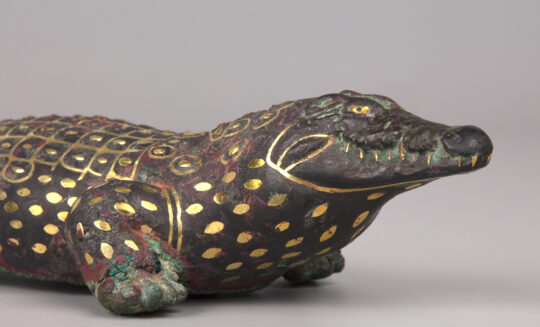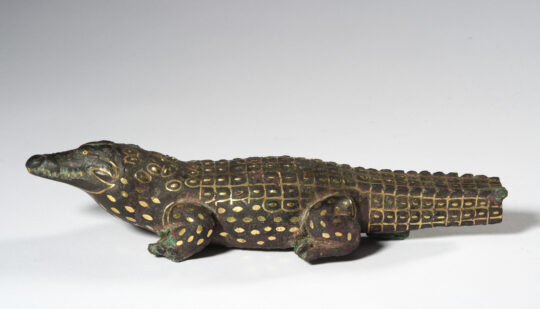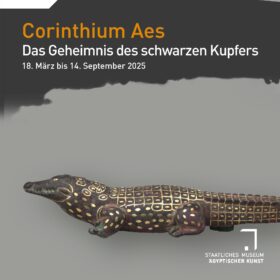Corinthium Aes
The Secret of Black Copper
18.03.–14.09.2025
 © SMÄK, Foto: R. Hessing
© SMÄK, Foto: R. HessingThis studio exhibition is dedicated to the mysterious “Corinthium Aes” – “Corinthium ore”. The knowledge surrounding the manufacturing techniques for this special metal alloy were long considered lost, its origin shrouded in myth and legend. Objects made of Corinthium Aes are easily recognised by their deep-purple, sometimes almost black patina which, when scratched or damaged, is self-repairing itself through skin contact due to its reaction to the chemicals in sweat.
People in Antiquity were fascinated by these aspects and classical authors such as Pliny or Plutarch expound on the beauty of the luxurious “Corinthian ore”. In Ancient Egypt, the material appeared even earlier, starting around the second millennium BCE. They called it “black copper” and used it exclusively for sumptuous cultic items and divine figures. The objects were often enriched with gold and silver inlays using a metal-on-metal technique called damascening.
 © SMÄK, Foto: M. Franke
© SMÄK, Foto: M. FrankeMatthias Lehr, a goldsmith from Nürnberg, took it upon himself to pierce the mystery of this valuable material and, with the help of archaeologist Alessandra Giumlia-Mair, managed to reconstruct the manufacturing process. In the exhibition, modern and Ancient Egyptian objects reveal some of the secrets of this amazing material.
The exhibition was curated by Olivia Zorn and Rebekka Pabst, both from the Egyptian Museum and Papyrus Collection in Berlin, and reworked for its presentation in Munich.
A catalogue for the exhibition is available in German.
104 pages, ISBN 978-3-9814386-4-2
15,- €, available at the ShopCafé
 © SMÄK
© SMÄK
